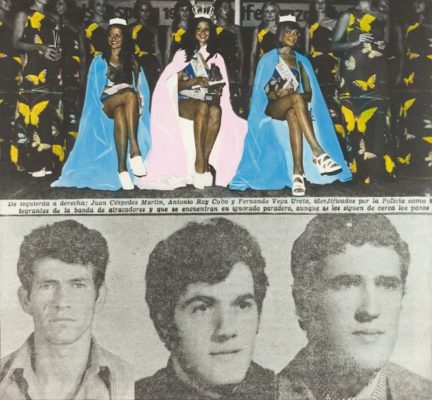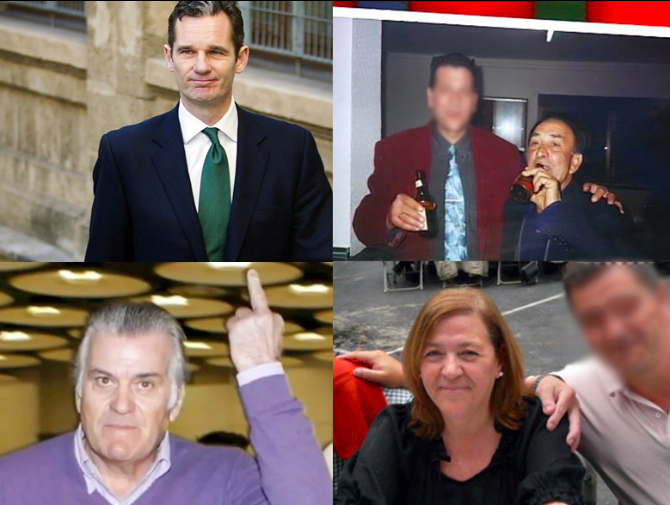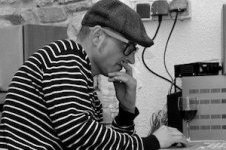Search
To search for an exact match, type the word or phrase you want in quotation marks.
A*DESK has been offering since 2002 contents about criticism and contemporary art. A*DESK has become consolidated thanks to all those who have believed in the project, all those who have followed us, debating, participating and collaborating. Many people have collaborated with A*DESK, and continue to do so. Their efforts, knowledge and belief in the project are what make it grow internationally. At A*DESK we have also generated work for over one hundred professionals in culture, from small collaborations with reviews and classes, to more prolonged and intense collaborations.
At A*DESK we believe in the need for free and universal access to culture and knowledge. We want to carry on being independent, remaining open to more ideas and opinions. If you believe in A*DESK, we need your backing to be able to continue. You can now participate in the project by supporting it. You can choose how much you want to contribute to the project.
You can decide how much you want to bring to the project.

Between art and activism. This is the common thread that runs through the works of Eulàlia Grau (Terrassa, 1946) to whom MACBA has dedicated her first monographic exhibition. Corruption, labour exploitation, real estate speculation, gender stereotypes and, in general, the capacity of the mass media to influence the image that we have of the world, are the principal themes that interest her.
Eulàlia Grau formulates and denounces reality, drawing images from the press that she then recomposes and uses as analytical elements, setting up comparisons. Her aesthetics oscillate between an effective colourist pop and elements closer to the conceptual derive or the vibe of Fluxus. She writes, “I´m looking to open up the possibility of a new reading of reality. So, I don’t think of my works as being for contemplation, so much as notes, annotations, commentaries and observations about the ethnographic, sociological, moral and cultural state of the world that surrounds me “.
One hopes to be moved by art. Eulàlia’s exhibition did. To be more specific, one of the pieces in the exhibition left me speechless. It dealt with two sequences of images in which the artist reconstructed a series of facts surrounding two specific people. The first, Diego Navarro, an Andalusian labourer and father of a numerous family, was struck, on 23 July 1973, by a bullet during the demonstration on the bridge of Ferro in Arboç, in which workers from the Baix Llobregat participated with their families, with the aim of adhering to the Cultura Catalana congress. Shortly afterwards he ended up being imprisoned in Tarragona, where he committed suicide. The other is the story of Juan Vilá Reyes, a familiar, high profile Catalan businessman, implicated in the Matesa fraud, a case for which he was imprisoned and later absolved.
The two narratives run in parallel, evidencing the lack of information and images related to the first case in contrast to the abundance of data and documentation about the second. The work ultimately reflects on the differential treatment meted to them by the justice system. The sequence of images and the severe contrast between the two life stories to which they pay testimony generate in the spectator a form of rage and contained sorrow from which it is difficult to escape, even more so given the currency of this social critique. Knockout.
Based on this I’d like to venture a temporal displacement: transporting this exercise of raw and pertinent reflection on the reality of the 70’s to today’s society. Iñaqui Urdangarín and J.L. Bárcenas are more than familiar public figures. Their presence in the media due to the respective cases of corruption is something that is very much in the news. The other two people are Amaya Eganya, 53 years old, a resident of Barakaldo and Jose Miguel Domingo, 53 years old, resident of the district of Chana, Granada. Both opted for suicide at the point when they were going to be evicted from their respective homes.
To end this article, I could go further and praise the bravery, perspicacity and commitment of both the artist and the institution involved. I could also add a pompous coda, showering the text with more emotional substance, to pour salt on the wounds and let them bleed. Another option would be a timid denouncement of how the art establishment has failed to position itself in this profound crisis. But what seems more pertinent is just a long silence, to stop and reconsider these four faces.


Blai has been dubious for years between the Punk vein and the Social Democrat. He thinks that good ideas and good manners are the pillars of Civilization, but too often subordinate news shows that vulgarity and banality are dominant. He says that now that we are in the Second Democratic Transition and in a global context of systemic crisis, perhaps I felt the time to sharpen the ridge.
"A desk is a dangerous place from which to watch the world" (John Le Carré)